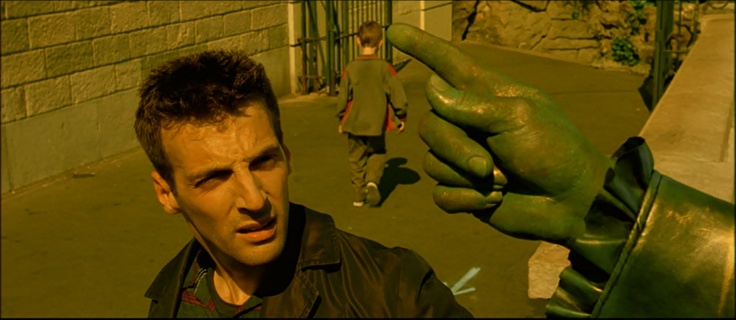Quand le doigt montre le ciel, l’imbécile regarde le doigt.
(Jean-Pierre Jeunet)
For those who don’t speak French, or have never watched the fantastical modern fairy tale that is Amélie [in that case, stop reading and go watch it], this translates to: “When a finger is pointing up to the sky, only a fool looks at the finger.”
It’s not just fools; most animals would look at your finger and not the object that is being pointed at. Apparently, it is a rare trait to understand what pointing means.
Even though it is often considered rude to point – I surely remember being told that it was – it turns out that pointing is something very human.
What’s the point?
According to Michael Tomasello (Duke University), it all starts at the young age of 9 months.
Some time between being 9 and 12 months old, infants start pointing at things that they want or find interesting. While it is possible for some animals (we’ll get to that later) to look at the pointed-to object, infants understand that there is more to it.
There are different reasons to point. You can point to things that you want, like a cookie or a toy. You can point to things that you find interesting, like a dog or a toy. You can point to things that remind you of a shared experience, like a train or a toy. I guess I really like toys.
At a very young age, infants understand that pointing can be used to draw attention to something. The fact that pointing starts exhibiting itself at such a young age is an indication that it is – at least for some part – an evolved trait rather than learned. By creating a connection, and shared experiences, with another person, you start automatically pointing to things that refer to that shared experience – even before language is developed.
No matter where you travel, what language you speak, how old you are, pointing is universal. We understand that something pointed at is a request to share attention.
Get to the point
So toddlers know that when we point at something, we want them to look at it. While it is possible to teach chimpanzees – our closest cousins in the animal kingdom – to look at the object that is pointed at and to use pointing as a means to communicate, it takes a lot of conditioning. Most chimps fail the “pointing test”.
Dogs, however, pass easily. It seems that living with humans for centuries (millennia even), has led to dogs evolving to understand what pointing means.
Dogs have long been the prime example of understanding what pointing means. Our second-favorite-pet, however, was long considered to be untrainable and aloof. Until recently, when new studies have shown that cats can pass the pointing test – if they care to participate…
But cats that have a good connection with their owner, and spend a lot of playtime with them, often have the ability to not be the fool, and look at the object rather than the finger. It seems that again, shared experiences are crucial for pointing to work.

In any case, next time someone tells you that it’s rude to point, tell them that it’s human to point.
Mostly.
Sources:
This blog post was partially inspired by my recent watching of Le Fabuleux Destin d’Amélie Poulin, my recent listening to Alan Alda’s podcast Clear and Vivid (Michael Tomasello On the Surprising Origins of Communication and Cooperation) and the feature in Science on behavioral research on cats: Ready to pounce by David Grimm.



One Reply to “To the point”